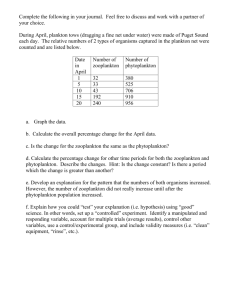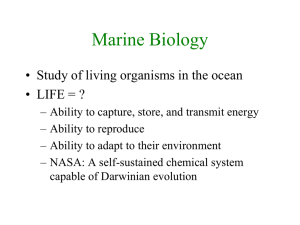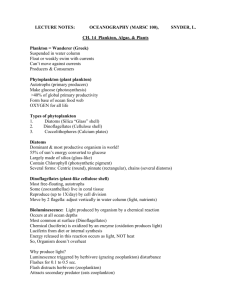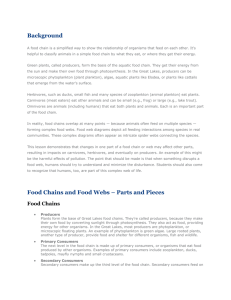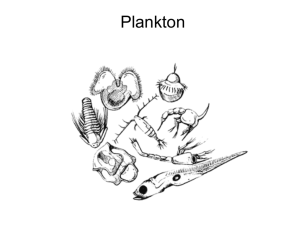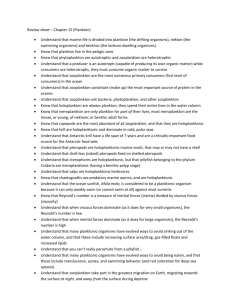Long-Term Variability in the North Pacific as Indicated by a Coupled
advertisement
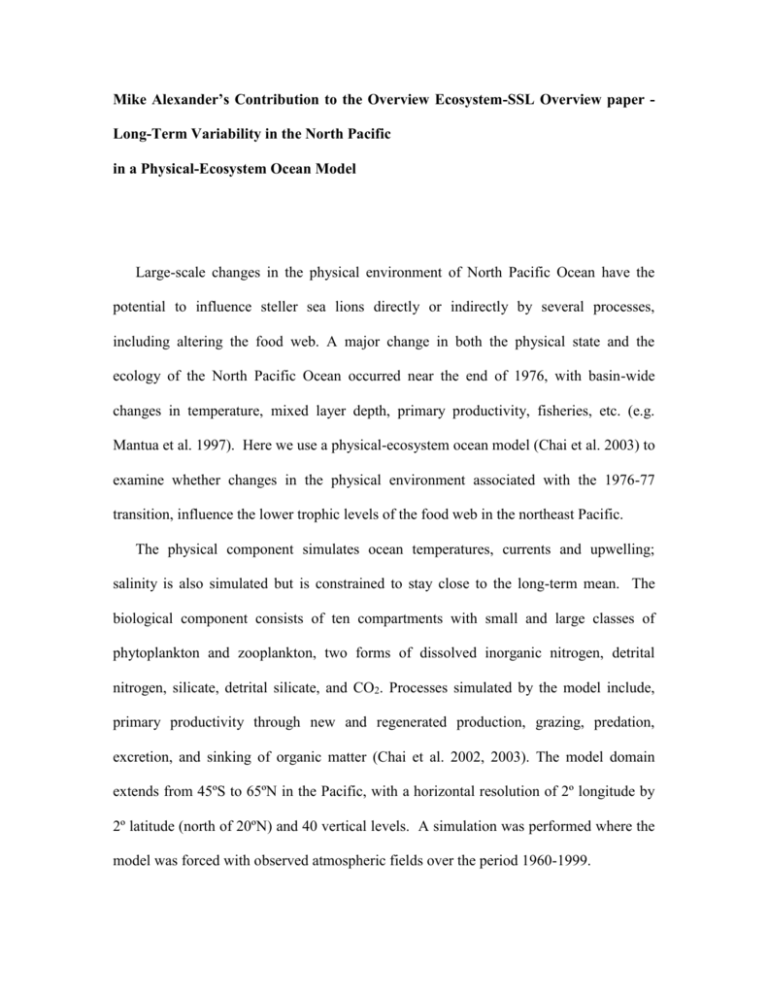
Mike Alexander’s Contribution to the Overview Ecosystem-SSL Overview paper Long-Term Variability in the North Pacific in a Physical-Ecosystem Ocean Model Large-scale changes in the physical environment of North Pacific Ocean have the potential to influence steller sea lions directly or indirectly by several processes, including altering the food web. A major change in both the physical state and the ecology of the North Pacific Ocean occurred near the end of 1976, with basin-wide changes in temperature, mixed layer depth, primary productivity, fisheries, etc. (e.g. Mantua et al. 1997). Here we use a physical-ecosystem ocean model (Chai et al. 2003) to examine whether changes in the physical environment associated with the 1976-77 transition, influence the lower trophic levels of the food web in the northeast Pacific. The physical component simulates ocean temperatures, currents and upwelling; salinity is also simulated but is constrained to stay close to the long-term mean. The biological component consists of ten compartments with small and large classes of phytoplankton and zooplankton, two forms of dissolved inorganic nitrogen, detrital nitrogen, silicate, detrital silicate, and CO2. Processes simulated by the model include, primary productivity through new and regenerated production, grazing, predation, excretion, and sinking of organic matter (Chai et al. 2002, 2003). The model domain extends from 45ºS to 65ºN in the Pacific, with a horizontal resolution of 2º longitude by 2º latitude (north of 20ºN) and 40 vertical levels. A simulation was performed where the model was forced with observed atmospheric fields over the period 1960-1999. The model simulation indicates that the large zooplankton biomass is substantially reduced during May in the Gulf of Alaska and eastern Bering Sea in 1977-1998 relative to 1960-1976 (Fig. MA1). A similar decrease occurs in April for the large phytoplankton and small zooplankton classes, representing about a 20% decrease in plankton during the spring bloom. This decrease in plankton biomass, could reduce the food available to higher trophic levels and thereby negatively impact Steller sea lions. The difference in the plankton concentration between the two epochs, however, is relatively unchanged in seasons other than spring and is negligible for the small phytoplankton class throughout the year. While no direct link was found between any single physical process (e.g. upwelling) and the biological changes seen in Fig MA1, the increased mixed layer depth in late winter along the southern coast of Alaska (Fig MA2, this plot or one like it might appear in another section) could reduce the light available for photosynthesis in the northern during 1976-1998 relative to 1960-1976 in that region. Some Caveats (We may want to include this information in the text, as a footnote or not include it at all): The model was designed to study oceanic processes on a basin-scale and is therefore not of sufficient resolution to investigate coastal ecosystem dynamics. The inadequate treatment of iron as a limiting nutrient in the model likely results in an overestimate of the mean phytoplankton concentration, especially during the spring bloom, and could affect long-term plankton variability as well. Brodeur and Ware (1992, Fisheries Oceanography) found that an increase in zooplankton occurred in the Gulf of Alaska after the 1976 transition, opposite to our results, although the observations they used were only collected during summer and were widely spaced in time and location. Figure Caption Fig MA1 a) Large zooplankton (mmol m-3) during 1977-1998 minus 1960-1976 in the physical-ecosystem ocean model’s top layer during May when the large zooplankton amount peaks. b) The biomass of the four plankton classes (mmol m-3) in each calendar month during 1960-1976 (solid lines) and 1977-98 (dashed lines) in the Gulf of Alaska region [46ºN-58ºN, 160ºW-140ºW, indicated by the box in a)]. Fig MA2 March mixed layer depth (m) in 1977-1998 minus 1960-76.

